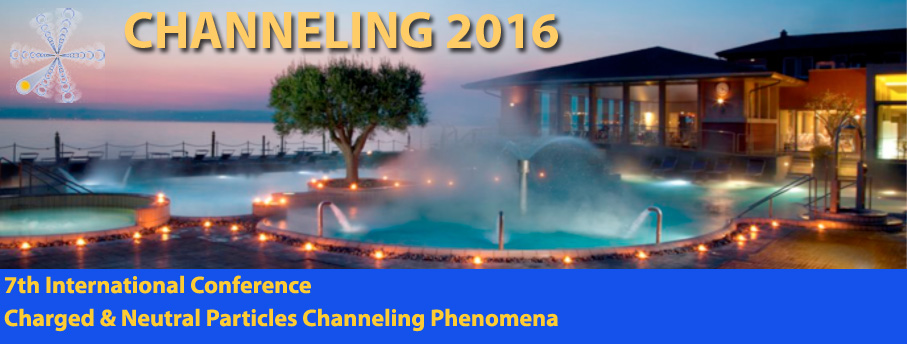Speaker
Prof.
Alan Phelps
(Department of Physics, University of Strathclyde, Glasgow G4 0NG, UK)
Description
For the creation of novel coherent sub-THz sources excited by electron beams there is a requirement to manufacture intricate periodic structures to produce and radiate electromagnetic fields. Additive manufacturing [1], or “3D printing”, is promising to be quick and cost-effective for prototyping these periodic structures.
Such structures are of great interest because the application of smart dispersion designs is having a positive impact on research leading to improved high-power coherent mm-wave sources [2-4]. Two dimensional (2D) periodic surface lattices (PSLs) [5] can be created by manufacturing shallow periodic perturbations on the inner surface of a hollow electrically conducting cylinder. The cylindrical PSL structures need to be compatible with vacuum conditions and the use of energetic electron beams, while also providing the required boundary conditions for the electromagnetic fields. Manufacturing the cylindrical PSLs out of a suitable metal usually provides a good vacuum envelope and the good electrical conductivity allows conduction away of any electrical charges impacting on the surfaces. A good thermal conductivity coefficient is another property that metals tend to possess and is helpful for PSLs intended for use in high power sources.
These 2D PSLs can be used for several applications that exploit a variety of physical phenomena, [2-8]. A dispersion relation describing the coupling of the volume and surface fields inside a 2D PSL of cylindrical topology was derived by Konoplev et al. [7]. Under certain conditions, when driven by a suitable electron beam this structure can support a Cherenkov instability that provides a coherent source of electromagnetic radiation.
Periodic structures in cylindrical geometry have been successfully prototyped using 3D printing to create a primary mold, which has then been used to cast successfully a metallic cylindrical PSL to form the interaction cavity for a novel sub-THz source. The 3D printing technology used has reasonably high resolution and the dimensional errors achievable with 3D printing are projected to decrease over time as the technology develops. Measurements, made using a vector network analyser, of the electromagnetic properties of a cylindrical PSL manufactured by these methods are compared with simulations made using CST Microwave Studio.
References
1. I. Gibson, D. Rosen and B. Stucker, “Additive Manufacturing Technologies: 3D Printing, Rapid Prototyping, and Direct Digital Manufacturing”, 2nd Edition, (2015) Springer, New York, USA.
2. N.S. Ginzburg, N.Yu. Peskov, A.S Sergeev, et al., J. Appl. Phys., 92 (2002) 1619-1629.
3. N.S. Ginzburg, N.Yu. Peskov, A.S Sergeev, et al, Phys. Plasmas, 9 (2002) 2798-2802.
4. I.V. Konoplev, A.W. Cross, A.D.R. Phelps, et al., Phys. Rev. E, 76 (2007) 056406.
5. I.V. Konoplev, L. Fisher, A.W. Cross, et al., Appl. Phys. Lett., 96 (2010) 261101.
6. A.W. Cross, I.V. Konoplev, A.D.R. Phelps, et al., J. Appl. Phys., 93 (2003) 2208-2218.
7. I.V. Konoplev, A.J. MacLachlan, C.W. Robertson, et al., Appl. Phys. Lett.,101 (2012) 121111.
8. I.V. Konoplev, A.J. MacLachlan, C.W. Robertson, et al., Phys. Rev. A, 84 (2011) 013826.
Summary
For the creation of novel coherent sub-THz sources excited by electron beams there is a requirement to manufacture intricate periodic structures to produce and radiate electromagnetic fields. Additive manufacturing, or “3D printing”, is promising to be quick and cost-effective for prototyping these periodic structures.
Author
Mr
Alan Phipps
(Department of Physics, University of Strathclyde, Glasgow G4 0NG, UK)
Co-authors
Prof.
Adrian Cross
(Department of Physics, University of Strathclyde, Glasgow, G4 0NG, UK)
Prof.
Alan Phelps
(Department of Physics, University of Strathclyde, Glasgow G4 0NG, UK)
Dr
Amy MacLachlan
(Department of Physics,University of Strathclyde, Glasgow G4 0NG, UK)
Dr
Craig Robertson
(Department of Physics, University of Strathclyde, Glasgow G4 0NG, UK)
Dr
Ivan Konoplev
(JAI, Department of Physics, University of Oxford,Oxford OX1 3RH, UK)

